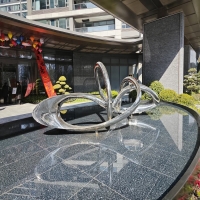Welcome to the website for landscape facilities products and knowledge.
What are the most common misconceptions about the Landscape Round Table, and how are they addressed?
The Landscape Round Table (LRT) is a pivotal concept in urban planning and community development, yet it is often shrouded in misunderstanding. Many hold misconceptions about its function and impact, which can hinder productive public engagement. Let's address and clarify the most common fallacies.
One prevalent misconception is that the Landscape Round Table is merely a symbolic gesture, a "talking shop" where decisions are already predetermined. Critics argue that it serves to placate the community without incorporating its feedback. This is addressed through the LRT's structured, transparent process. Genuine LRTs operate with published agendas, documented minutes, and clear pathways showing how public input directly influences design iterations and final plans. The presence of independent facilitators and the inclusion of diverse stakeholders, from residents to technical experts, ensure that the dialogue is substantive and that consensus-building is a primary goal, not an afterthought.
Another common fallacy is the belief that the LRT gives a small, vocal minority undue power to veto projects. This perspective frames community input as an obstacle to progress. In reality, a well-run LRT is not about veto power but about collaborative problem-solving. It addresses this by focusing on shared values and evidence-based discussion. Planners and developers use the LRT to present data, constraints, and opportunities, empowering the community to work *with* them to find creative solutions that balance individual concerns with the broader public good. The outcome is often a more resilient and widely supported project, not a diluted one.
A third misunderstanding is that the Landscape Round Table process inevitably leads to significant project delays and inflated costs. While inclusive processes require time, this view overlooks the long-term benefits. The LRT addresses this by identifying and resolving conflicts early in the planning stages. By confronting potential opposition and logistical issues upfront, the process actually helps avoid costly legal battles, redesigns, and construction delays later. The initial investment in time fosters community buy-in, which can accelerate subsequent approval phases and ensure the project's long-term success and sustainability.
Finally, some perceive the Landscape Round Table as being exclusively for large-scale, controversial developments. They assume small projects or routine maintenance don't warrant such a forum. This is countered by demonstrating the LRT's scalability and adaptability. The core principles—structured dialogue, inclusive participation, and transparent decision-making—can be applied to any project affecting a shared landscape. Whether planning a new park or revitalizing a neighborhood square, the LRT model provides a framework for building trust and fostering a sense of collective ownership from the very beginning.
In conclusion, the Landscape Round Table is far from a perfunctory or obstructive exercise. When implemented with integrity, it is a powerful tool for democratizing design and creating landscapes that truly reflect the communities they serve. By moving beyond these misconceptions, we can better appreciate its role in building not just better spaces, but stronger communities.
Related search:

Recommendation
Abstract art sculpture, stainless steel metal sculpture, large-scale water feature sculpture